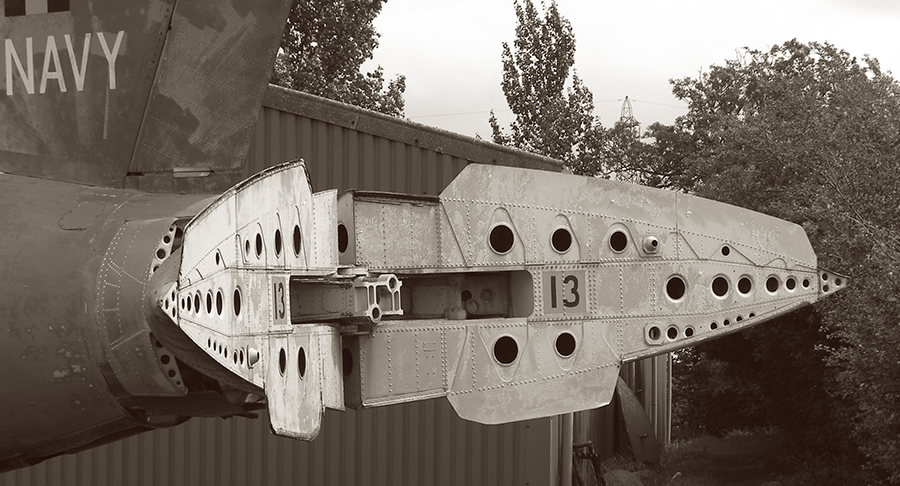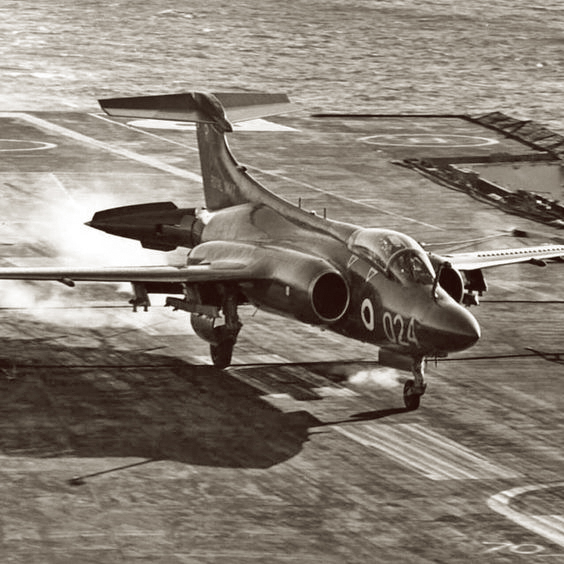- AUST POST SHIPPING
- 0438 654 235
- info@recoverycurios.com
- P.O. Box 7640 Cairns QLD Australia, 4870
-
0
Shopping Cart


BLACKBURN BUCCANEER
 At the height of the Cold War the Soviets began a large Sverdlov-class cruiser design construction program. An older design, these were to be the last conventional big gun cruisers built for the Soviet Navy, but stripped down and highly modified they were both fast and deadlier and ideally suited for the rough waters of the North Atlantic.
At the height of the Cold War the Soviets began a large Sverdlov-class cruiser design construction program. An older design, these were to be the last conventional big gun cruisers built for the Soviet Navy, but stripped down and highly modified they were both fast and deadlier and ideally suited for the rough waters of the North Atlantic.
Sverdlov-class also carried the most advanced modern radar equipment and anti aircraft batteries of any large cruiser of the  time and with the Soviets looking at building 40 ships in this class and stationing them world wide, particularly in the Indonesian region, they presented a real threat to the British and Dutch fleets operating there.
time and with the Soviets looking at building 40 ships in this class and stationing them world wide, particularly in the Indonesian region, they presented a real threat to the British and Dutch fleets operating there.
 With satellite surveillance technology still a long way off into the future, tracking the fast Soviet cruisers presented a major issue as both navies lacked 24 hr day/night carrier capability in the region. The British in particular had been caught flat-footed with their new generation of fast attack destroyers and cruisers still on the drawing board.
With satellite surveillance technology still a long way off into the future, tracking the fast Soviet cruisers presented a major issue as both navies lacked 24 hr day/night carrier capability in the region. The British in particular had been caught flat-footed with their new generation of fast attack destroyers and cruisers still on the drawing board.
 Instead, the Royal Navy commissioned a new carrier-capable attack aircraft which could target the Sverdlov-class cruisers by approaching at low altitudes well below Soviet radar - the Blackburn Buccaneer.
Instead, the Royal Navy commissioned a new carrier-capable attack aircraft which could target the Sverdlov-class cruisers by approaching at low altitudes well below Soviet radar - the Blackburn Buccaneer.
 The Buccaneer could carry a wide range of weaponry both conventional and nuclear and was later fitted with short range, anti-shipping missiles to improve its survivability against more modern ship-based anti-aircraft weapons.
The Buccaneer could carry a wide range of weaponry both conventional and nuclear and was later fitted with short range, anti-shipping missiles to improve its survivability against more modern ship-based anti-aircraft weapons.
With a crew of two seated in tandem and the observer/navigator seated slightly higher and offset from the pilot, the Buccaneer had an all-weather capability provided by the pilot’s head-up display and the observer’s advanced navigation systems and fire control radar.
 One of the largest aircraft to operate from any British aircraft carrier, the Buccaneer would cruise at height before dropping down to less than 100ft above the surface for a 500kt dash to and from the target. This was well below the enemies radar and enabled the Buccaneer to launch its strike before the surface ship could compute a targeting solution with its anti-aircraft batteries.
One of the largest aircraft to operate from any British aircraft carrier, the Buccaneer would cruise at height before dropping down to less than 100ft above the surface for a 500kt dash to and from the target. This was well below the enemies radar and enabled the Buccaneer to launch its strike before the surface ship could compute a targeting solution with its anti-aircraft batteries.
The Buccaneer’s high airspeed at low altitude was a key to its success as a tactical strike aircraft but its high speed also presented some significant challenges to its designers. How does a high-speed attack aircraft reduce its airspeed significantly  enough to land safely back on a slick, carrier flight deck in the middle of a rolling ocean?
enough to land safely back on a slick, carrier flight deck in the middle of a rolling ocean?
The Buccaneers small wing was ideally suited to high-speed flight at low altitude; however, a small wing did not generate sufficient lift that was essential for carrier operations.
 Rather than try and increase the Buccaneer’s wing and flap surface areas, its designers looked at new air-braking technology known as as boundary layer control (BLC), which enabled the aircrfat to reduce its airspeed but still ensure the aircraft retained aerodynamic performance.
Rather than try and increase the Buccaneer’s wing and flap surface areas, its designers looked at new air-braking technology known as as boundary layer control (BLC), which enabled the aircrfat to reduce its airspeed but still ensure the aircraft retained aerodynamic performance.
The BLC system called for high pressure air to be bled directly from the engines, which was “blown” against various parts of the aircraft’s wing surfaces.
 Released through a full-span slit along the wing’s trailing edge, the released air acted as a large air brake and connected with a self-trimming system, it counteracted any severe pitch movements that would otherwise be generated by use of the BLC.
Released through a full-span slit along the wing’s trailing edge, the released air acted as a large air brake and connected with a self-trimming system, it counteracted any severe pitch movements that would otherwise be generated by use of the BLC.
Used on both the wing and tailplane, BLC compressed and smoothed the boundary layer airflow, significantly decreasing airflow separation at the back of the wing. The reduced airflow separation in turn decreased stall  speed, whilst increasing the effectiveness of its trailing edge control surfaces, including flaps and ailerons.
speed, whilst increasing the effectiveness of its trailing edge control surfaces, including flaps and ailerons.
The Buccaneer's air braking was also greatly assisted by the aircraft's unique 'split tail' which would open wide when landing to create tail drag.

Before landing, the pilot would open the BLC vents as well as lower the flaps to achieve slow, stable flight.
A consequence of the blown wing was that the engines were required to run at high power for low-speed flight in order to generate sufficient compressor gas for blowing but this also had the added advantage of enabling the aircraft to easily pull away during a failed landing attempt.
For a carrier take-off, the Buccaneer was pulled tail-down on the catapult, with its nose-wheel in the air to put the wing at about 11°. It could be launched “hands-off” with the pilot able to leave the tailplane controls in a neutral position.
 During its service, the Buccaneer had become the backbone of the Navy’s conventional and nuclear strike operations but its existence was inextricably linked with that of Britain's ageing super carrier fleet like HMS Victorious, Eagle, Ark Royal, and Hermes.
During its service, the Buccaneer had become the backbone of the Navy’s conventional and nuclear strike operations but its existence was inextricably linked with that of Britain's ageing super carrier fleet like HMS Victorious, Eagle, Ark Royal, and Hermes.
When the British government decided to retire its large aircraft carriers in favour of the smaller Invincible class aircraft carriers, specifically designed to launch the new Hawker Sea Harrier jump jets and an expanded fleet of antisubmarine helicopters, the Buccaneer’s fate was sealed and it was retired from service with the decommissioning in 1978 of the Ark Royal, the last of the navy’s large fleet carriers.
All Blackburn Buccaneer Instruments listed below come complete with detailed Scale Model, Mango Wood Stand & Plaque plus Printed Fact Sheet featuring photo of instrument in aircraft cockpit.
Return to VINTAGE ORIGINAL AIRCRAFT INSTRUMENTS
- LAND
- SEA
- AIR
- VINTAGE ORIGINAL AIRCRAFT INSTRUMENTS
- HAWKER TYPHOON
- VICKERS WELLINGTON
- FAIREY GANNET
- RYAN ST-A SPORTS TRAINER
- DE HAVILLAND TIGER MOTH
- HAWKER HUNTER
- Mc DONNELL DOUGLAS KC-10 AERIAL TANKER
- SOPWITH CAMEL
- AIRCO DH.1 AND DH.2
- JUNKERS JU 87
- CURTISS C-46 COMMANDO
- HANDLEY PAGE HAMPDEN
- SUPERMARINE SEAFIRE
- B-25 MITCHELL BOMBER
- BRISTOL BLENHEIM
- ENGLISH ELECTRIC LIGHTNING
- HAWKER TEMPEST MkVI
- YAKOVELOV YAK - 3
- FOCKE-WULF FW190
- FOLLAND GNAT
- AIRSPEED OXFORD
- SHORT STIRLING
- AVRO ANSON
- DOUGLAS C-133 CARGOMASTER
- HANDLEY PAGE VICTOR BOMBER
- DE HAVILLAND SEA VENOM
- VICKERS VALIANT BOMBER
- DOUGLAS A-26 INVADER
- GRUMMAN S2F TRACKER
- SUPERMARINE SPITFIRE
- LOCKHEED P2-V NEPTUNE
- P-51 MUSTANG
- BRISTOL BEAUFIGHTER
- DE HAVILLAND MOSQUITO
- B-26 MARTIN MARAUDER
- P3 ORION
- DOUGLAS A-20 HAVOC
- P-39 AIRACOBRA
- AVRO SHACKLETON
- B-17 FLYING FORTRESS
- B-24 LIBERATOR
- MESSERSCHMITT BF-110
- MESSERSCHMITT BF-109
- BRISTOL BEAUFORT
- KAWASAKI Ki-45 (NICK) INTERCEPTOR
- C-130 HERCULES
- CAC BOOMERANG
- AVRO LANCASTER
- GRUMMAN F4F WILDCAT
- F4U VOUGHT CORSAIR
- WESTLAND LYSANDER
- P-47 REPUBLIC THUNDERBOLT
- NORTH AMERICAN T-6 TEXAN - HAVARD
- C-47 SKYTRAIN
- DOUGLAS SBD DAUNTLESS
- CAC WIRRAWAY
- PBY CATALINA
- P-40 WARHAWK
- FAIREY SWORDFISH
- P-38 LIGHTNING
- HAWKER HURRICANE
- CURTISS SB2C HELLDIVER
- GRUMMAN F6F HELLCAT
- SEAKING HELICOPTER
- SEAHAWK HELICOPTER
- DOUGLAS A4G SKYHAWK
- GRUMMAN TBF AVENGER
- HANDLEY PAGE HALIFAX
- DOUGLAS SKYRAIDER AE-1
- GLOSTER METEOR
- JUNKERS JU-88
- F-86 SABRE JET
- SHORT SUNDERLAND
- B-29 SUPER FORTRESS
- F-9F GRUMMAN PANTHER
- F-100D SUPER SABRE
- BELL UH-1 HUEY HELICOPTER
- AVRO VULCAN STRATEGIC BOMBER
- CANBERRA BOMBER
- DHC-4 CARIBOU
- BLACKBURN BUCCANEER
- DE HAVILLAND VAMPIRE JET
- HAWKER SEA FURY
- LOCKHEED HUDSON
- LOCKHEED EC-121 WARNING STAR
- SEPECAT JAGUAR
- HAWKER SIDDELEY NIMROD
- HAWKER SIDDELEY HARRIER
- ARADO AR 196
- VOUGHT OS2U KINGFISHER
- LOCKHEED ELECTRA
- NORTHROP P-61 BLACK WIDOW
- BOEING CH-47 CHINOOK
- LOCKHEED PV-1 VENTURA
- BOEING P26-A 'PEASHOOTER'
- Ilyushin Il-2 ‘Sturmovik’
- WESTLAND WESSEX
- FAIREY FIREFLY
- VINTAGE AVIATION COLLECTABLES
- VINTAGE COLLECTABLE MODEL AIRCRAFT KITS
- RETRO STYLE METAL AIRCRAFT COLLECTABLES
- VINTAGE ORIGINAL AIRCRAFT INSTRUMENTS

